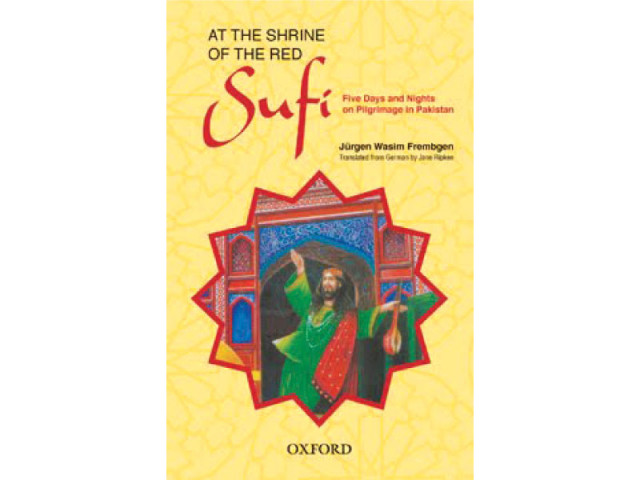
Consul-general Dr Tilo Klinner hosted an event titled 'Charisma of the Qalandar' on Thursday. It comprised the launch of Professor Dr Jurgen Wasim Frembgen's book, 'At the Shrine of the Red Sufi: Five Days and Nights on Pilgrimage in Pakistan', followed by a talk by the author. The book was launched in collaboration with the Oxford University Press (OUP).
Frembgen touched unique aspects of Sufi devotion and rituals which helped create an aura of a Sufi trance at the event. He greeted the audience by saying 'Mast Qalandar Jhoolay Lal' - the local greeting exchanged by followers of renowned Sufi saint Hazrat Lal Shahbaz Qalandar.

Frembgen called Qalandar the 'Red Sufi' and spoke about the significance of the colour, red. "Red is the colour of mystic ardour, kinship and love," he said. "It is the colour of the Qalandar, who is probably the only Sufi saint, that I am aware of, who has his own colour."
Interestingly, the audience was given red dhaagas (thread strings) upon arrival to signify their entrance into the 'sangat', that is the fellowship or presence, of the saint. The act was to symbolise entering the shrine of the saint in Sehwan Sharif.
The author showed various presentations during his talk which comprised different artworks depicting Qalandar. Whether it is the art on rickshaws and trucks across Pakistan or the cafes and shops named after the saint, the colour red had a strong presence.
Besides being a renowned anthropologist and Islamologist, Frembgen is the chief curator of the oriental department at the Museum of Ethnology, Munich, as well as a professor in Islamic Studies at the University of Munich. He has been involved in ethnographic fieldwork in Pakistan since 1981. His presentations spoke of his experiences. The fascinating images of the Sufi artefacts, devotees, musicians, posters and faqirs carried the audience to a trance-like world - a world of Sufi traditions and the culture of the Qalandar's shrine.
"In a world where logic divides us all, Sufism and Sufis bring people together," he said. He spoke about the significance of the life, history and teachings of the 'Red Saint'. An enchanting air could be felt when he read excerpts from his book. According to a press release issued by the OUP, the book is a 'vividly written narrative [that] takes the reader on a journey to experience the spiritual rapture, ecstasy, trance, magic and devotion at the annual urs celebrations held in honour of the Qalandar'.
The evening ended on the Sufi poems that were sung in praise of the Qalandar. Tufail Khan Sanjrani and his dance crew performed. The songs were incorporated by intense drumming of a naqarah-like instrument. Naqarah is a special kind of a drum played by the fakirs at Qalandar's shrine in Sehwan. Dervishes performed the traditional dance, dhamaal, to the tunes. "Such programmes should be held regularly as they refresh the souls of the people," said Sanjrani after his performance.
The boundless, encompassing nature of Sufi culture was reinforced by the musical performance. It was intense and greatly affected the audience. "I have a different cultural background and I cannot understand what they are singing," said an official of the German consulate, Ralph Nagelo. "But I am still enjoying it."
"We need to celebrate the tangible traditions along with the intangible traditions that are changing with time," said Klinner.
Published in The Express Tribune, November 15th, 2014.


















COMMENTS
Comments are moderated and generally will be posted if they are on-topic and not abusive.
For more information, please see our Comments FAQ